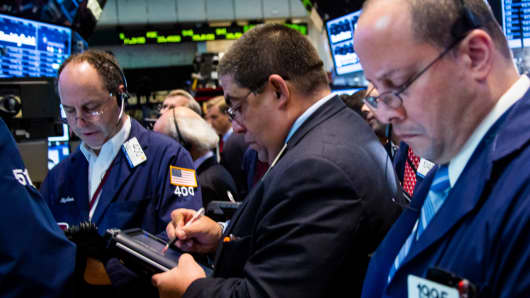If you're a sports fan, June is a terrific time. The U.S. Open Golf gets underway this week with Tiger still searching for his first Major since 2008, The Lions are touring down under and there's Ascot and the British Grand Prix to come.
But for global stocks, June has been a little less welcome.
Since 2000, this mid-year month has been tied with September as the worst performer for the Dow with an average loss of 1.75%. For the S&P, it's the second worst month with an average loss of 1.4%.
So far this year June has also been pretty volatile.
Much of that is due to agonising over what the Federal Reserve will or won't do - and more importantly, when - with regards to its monthly $85 billion asset purchases.
In that sense the latest employment report for the U.S. clarified everything, or nothing at all, depending on where you sit.
The headline number was a little stronger than expected, but came in below the 200,000 mark that suggests strong momentum. While the rate rose because the Labour force increased, but there was some weakness in manufacturing and a negative tone in hospitality.
(Read More: Stocks Soar; Dow Gains 200 Points on Jobs Data)
The correct assumption would be that the U.S economy continues its slow, modest recovery. Which for markets means not enough to change Fed policy or accelerate tapering off its bond purchases.
It's also not enough to delay a change in Fed policy. So stick to your poison. If you thought tapering would begin in September, then you should still hold that view. And if you thought it would start at the end of the year, then you should probably hold that view too.
Let's hope that what it does mean is that we can get away from good economic data being bad for stocks because of the fear of being weaned off an intravenous drip of liquidity.
But there is some comfort, because whatever happens investors can still count on a period of very low interest rates and treasury yields.
As Capital Economics points out, it's the stock of assets that the Fed holds which has a greater influence on yields than the flow, therefore "a reduction in the pace of the monthly asset purchases shouldn't push yields much higher."
(Read More: Bond Sell-Off Heightens Risk of '1994 Moment')
If one then adds in a more subdued outlook for inflation, both stock and bond markets should take heart from a Fed that will be able to keep policy loose - even after QE3 has ended and the recovery is sustainable and strong.
There may be more volatility ahead and a degree of caution is called for. Stocks are still well up for the year despite recent pullbacks, but right now it may be that investors' worst fears are fear itself.


